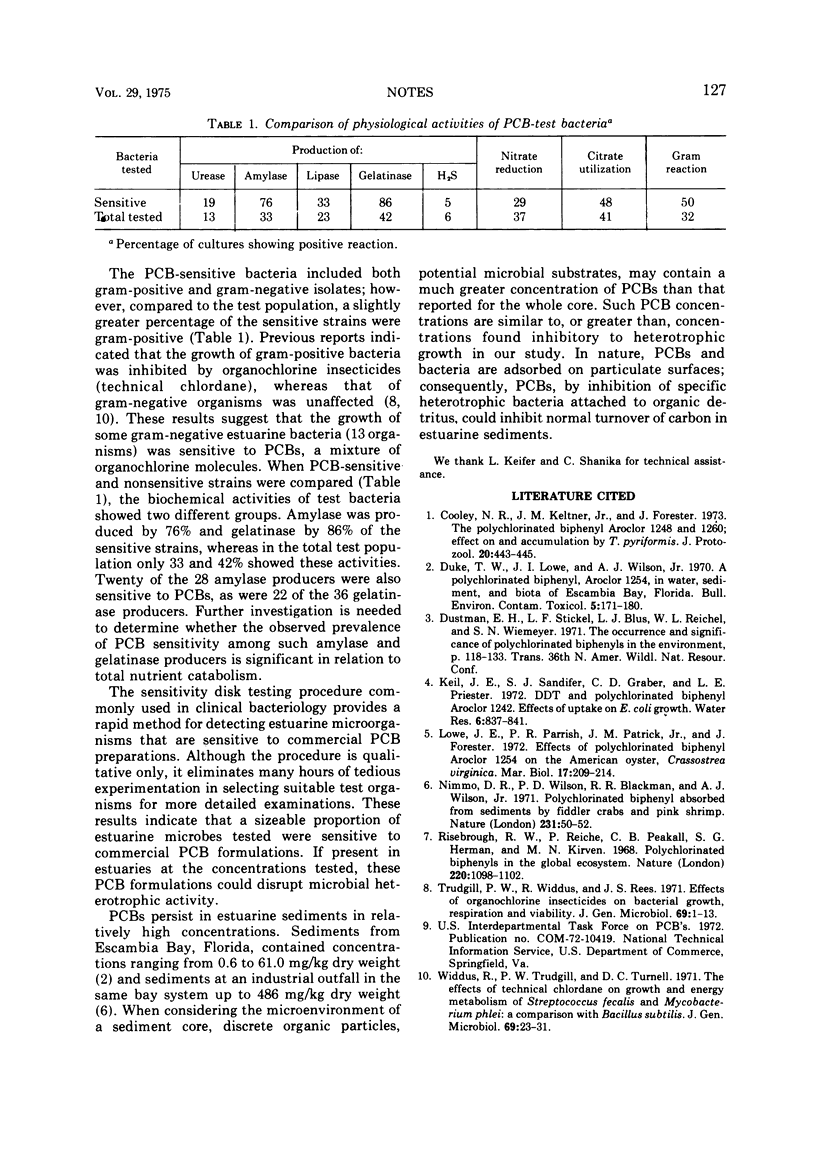Abstract
Polychlorinated biphenyl formulations inhibited the growth of certain estuarine bacteria. The sensitive strains, although exhibiting some similar physiological characteristics, contained both gram-positive and gram-negative bacteria.
Full text
PDF


Images in this article
Selected References
These references are in PubMed. This may not be the complete list of references from this article.
- Cooley N. R., Keltner J. M., Jr, Forester J. The polychlorinated biphenyls Aroclors 1248 and 1260: effect on and accumulation by Tetrahymena pyriformis. J Protozool. 1973 Aug;20(3):443–445. doi: 10.1111/j.1550-7408.1973.tb00920.x. [DOI] [PubMed] [Google Scholar]
- Nimmo D. R., Wilson P. D., Blackman R. R., Wilson A. J., Jr Polychlorinated biphenyl absorbed from sediments by fiddler crabs and pink shrimp. Nature. 1971 May 7;231(5297):50–52. doi: 10.1038/231050b0. [DOI] [PubMed] [Google Scholar]
- Risebrough R. W., Rieche P., Peakall D. B., Herman S. G., Kirven M. N. Polychlorinated biphenyls in the global ecosystem. Nature. 1968 Dec 14;220(5172):1098–1102. doi: 10.1038/2201098a0. [DOI] [PubMed] [Google Scholar]
- Trudgill P. W., Widdus R., Rees J. S. Effects of organochlorine insecticides on bacterial growth, respiration and viability. J Gen Microbiol. 1971 Nov;69(1):1–13. doi: 10.1099/00221287-69-1-1. [DOI] [PubMed] [Google Scholar]
- Widdus R., Trudgill P. W., Turnell D. C. The effects of technical chlordane on growth and energy metabolism of Streptococcus faecalis and Mycobacterium phlei: a comparison with Bacillus subtilis. J Gen Microbiol. 1971 Nov;69(1):23–31. doi: 10.1099/00221287-69-1-23. [DOI] [PubMed] [Google Scholar]



